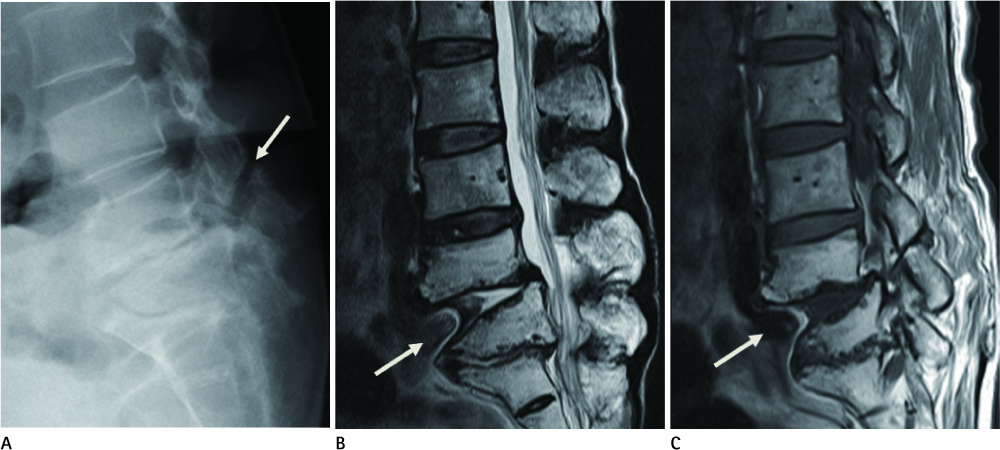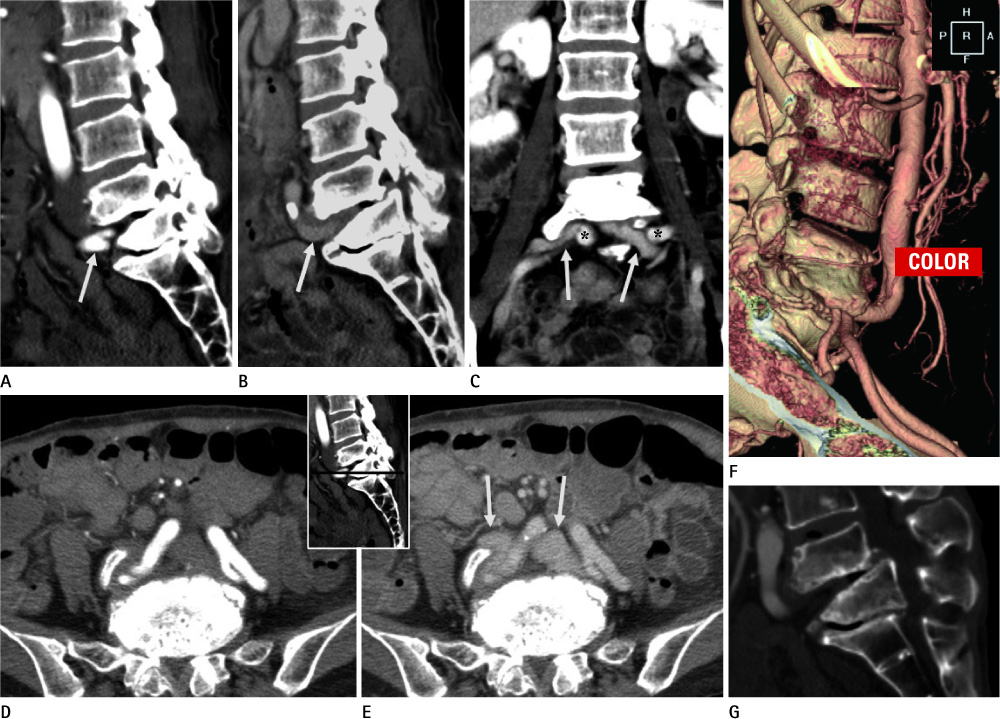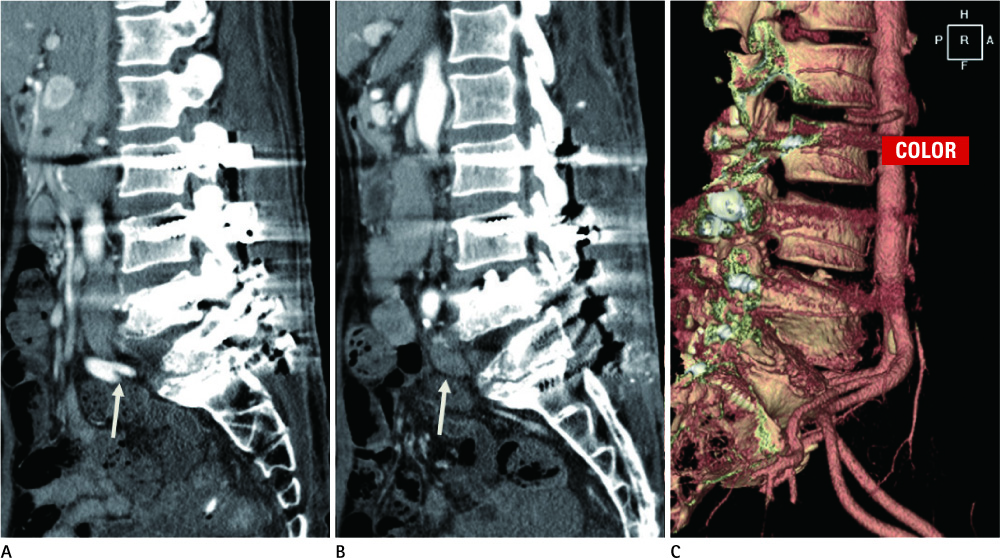J Korean Soc Radiol.
2011 Oct;65(4):411-414. 10.3348/jksr.2011.65.4.411.
Intradiscal Herniation of the Common Iliac Vessels: A Case Report
- Affiliations
-
- 1Department of Radiology, Kyung Hee University Medical Center, Kyung Hee University College of Medicine, Seoul, Korea. t2star@khu.ac.kr
- 2Department of Radiology, Kyung Hee University Hospital at Gangdong, Kyung Hee University College of Medicine, Seoul, Korea.
- KMID: 2002944
- DOI: http://doi.org/10.3348/jksr.2011.65.4.411
Abstract
- In previously published spine related articles, common iliac vessel injuries have only been mentioned for complications resulting from a lumbar spine surgery. We present a case report of common iliac vessels herniating into a lumbar intervertebral disc incidentally found on magnetic resonance imaging and computed tomography angiography of the lumbar spine.
MeSH Terms
Figure
Reference
-
1. Samudrala S, Khoo LT, Rhim SC, Fessler RG. Complications during anterior surgery of the lumbar spine: an anatomically based study and review. Neurosurg Focus. 1999; 7:e9.2. Nam TK, Park SW, Shim HJ, Hwang SN. Endovascular treatment for common iliac artery injury complicating lumbar disc surgery: limited usefulness of temporary balloon occlusion. J Korean Neurosurg Soc. 2009; 46:261–264.3. Kang BU, Lee SH, Jeon SH, Park JD, Maeng DH, Choi YG, et al. An evaluation of vascular anatomy for minilaparotomic anterior L4-5 procedures. J Neurosurg Spine. 2006; 5:508–513.4. Devereaux MW. Anatomy and examination of the spine. Neurol Clin. 2007; 25:331–351.5. Hey HW, Hee HT. Lumbar degenerative spinal deformity: surgical options of PLIF, TLIF and MI-TLIF. Indian J Orthop. 2010; 44:159–162.6. Shih PY, Lau HP, Jeng CS, Hung MH, Chan KC, Cheng YJ. Iatrogenic left internal iliac artery perforation during lumbar discectomy. Acta Anaesthesiol Taiwan. 2009; 47:196–199.7. Goodkin R, Laska LL. Vascular and visceral injuries associated with lumbar disc surgery: medicolegal implications. Surg Neurol. 1998; 49:358–370. discussion 370-372.
- Full Text Links
- Actions
-
Cited
- CITED
-
- Close
- Share
- Similar articles
-
- Correlation Between Disk Morphology and Intradiscal Pressure in Lumbar Intervertebral Disk
- Lumbar Epidural Venography in the Diagnosis of Lumbar Disc Herniation
- Massive retroperitoneal hemorrhage due to a tearing of common iliac vein complicating lumbar diskectomy: a case report
- A Rare Case of Lumbar Traumatic Intradiscal Hematoma Followed by Repeatative Occupation Related Minor Trauma
- Multiple venous variations at the abdominopelvic region: a case report




